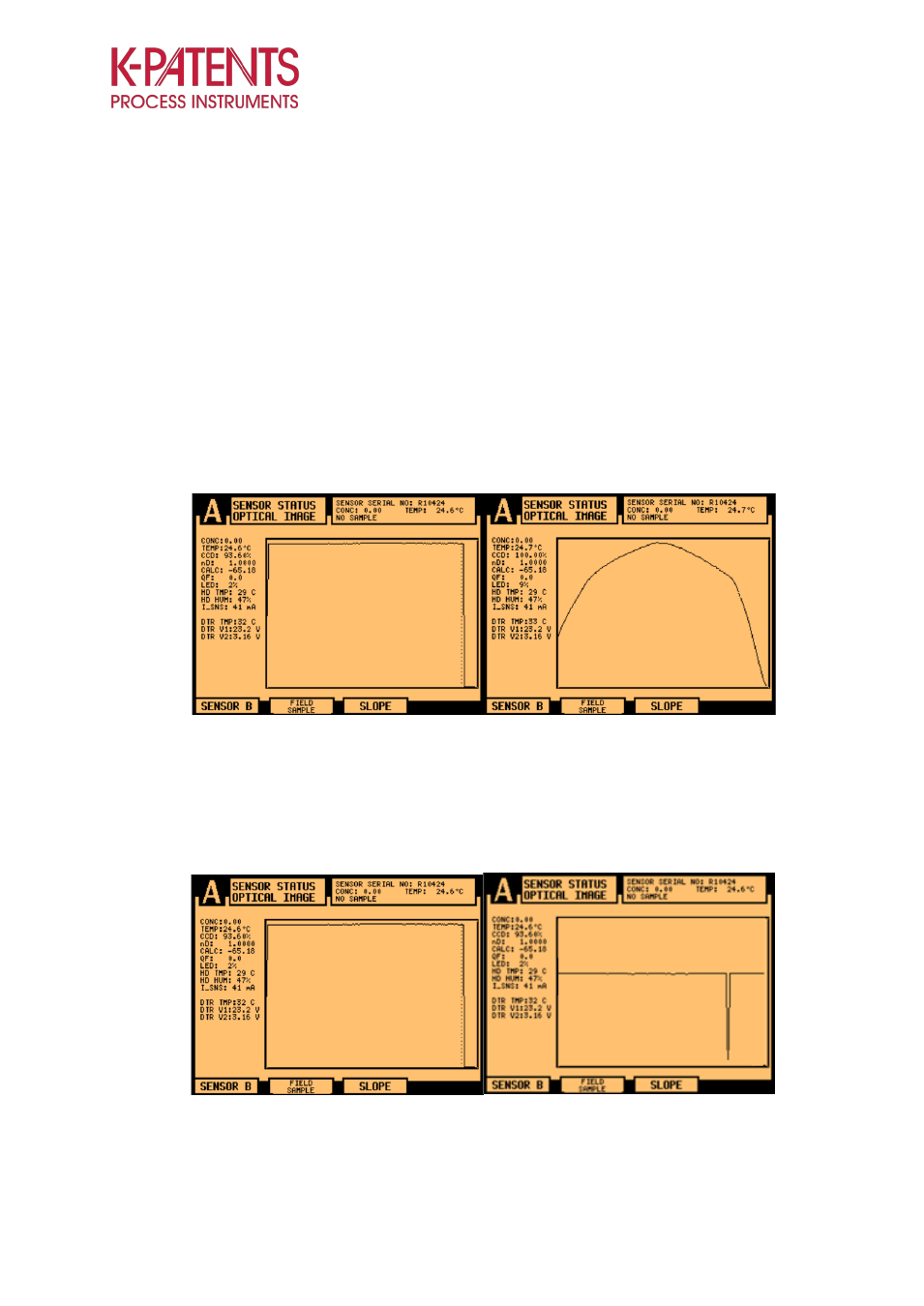K-Patents PR-23 Troubleshooting Guide User Manual
Page 5

TROUBLESHOOTING GUIDE
FOR PR-23 ALL MODELS
5 (14)
January 9, 2015
K-PATENTS OY
Postal Address: P.O.Box 77, FI-01511 Vantaa, Finland
Street Address: Elannontie 5, FI-01510 Vantaa, Finland
Tel. int.+358 207 291 570
Fax int.+358 207 291 577
www.kpatents.com
Vat No. FI03035575
Business ID 0303557-5
Registered in Helsinki
2.1
Optical Image and Slope
The optical image can be described as a window to the process medium. However, it also gives information
about the condition of the prism and the optics. Scratches or coating layers on the prism can be identified
from the optical image. Altering shapes are formed with every change in the prism-process interface.
Generally, the instrument has two different optical images, i.e. the raw image and IDS scaled optical image.
The raw image is the real response signal from the fotocells of the CCD-element, which is also unique to
every instrument. Consequently, the IDS image was developed to unify the optical images making the
instrument more user friendly. The IDS image is created by mathematical scaling of the raw image to a
rectangular shape improving the measurement stability on high and low refractive index (RI) ranges.
Figure 4
IDS image on the left and raw image on the right
The detection of the measurement point is based on the steepest slope in the optical image (borderline of
activated vs inactivated light reflection). The slope image gives a derivative graph of the optical image that
can be used to examine the quality of the optical image and stability of the measurement.
Figure 5
Optical image and slope without sample
Without a sample on the prism surface, the IDS scaled
optical image should always return to “box” shape.
